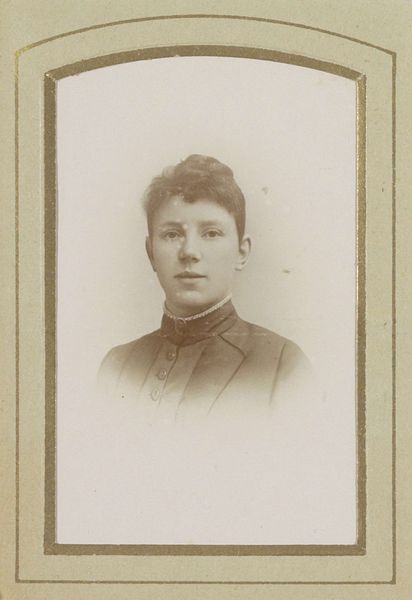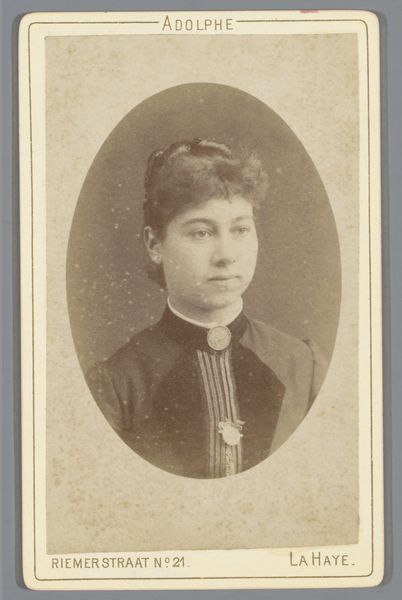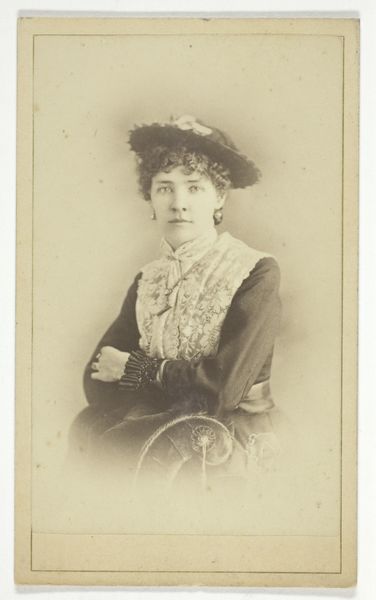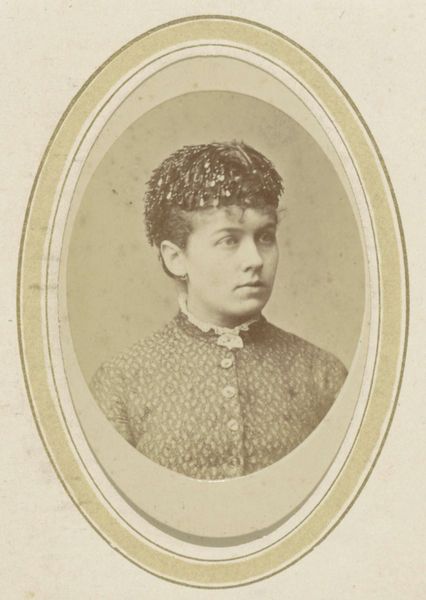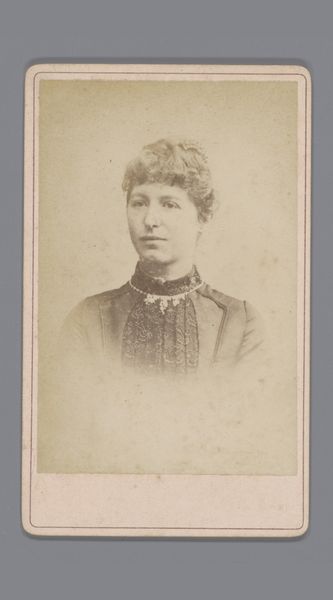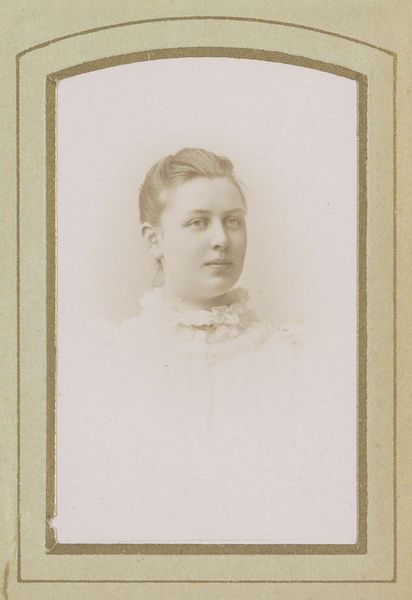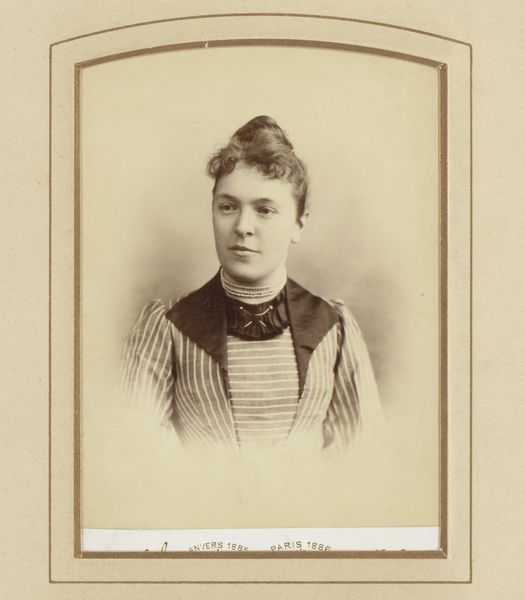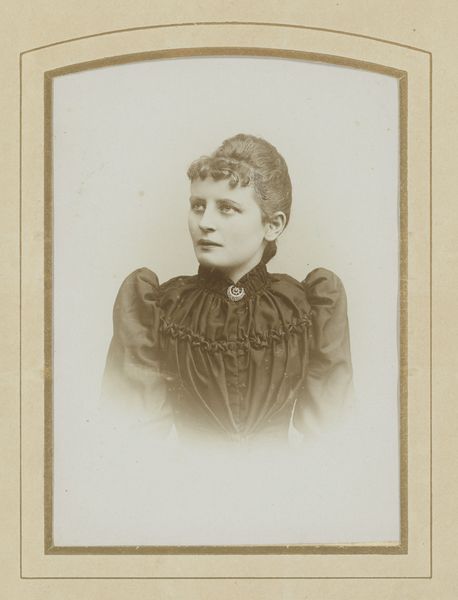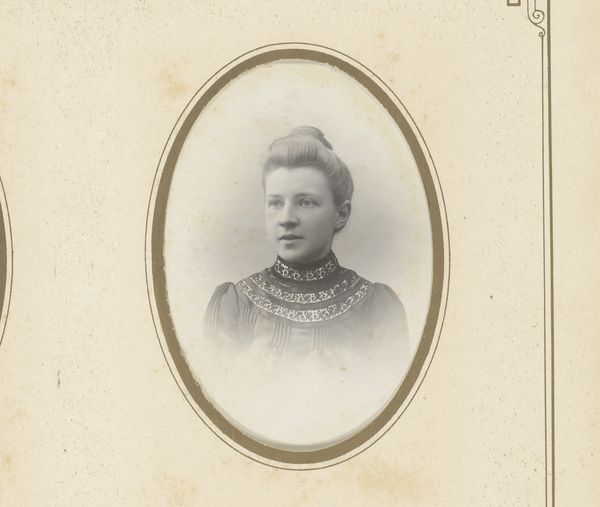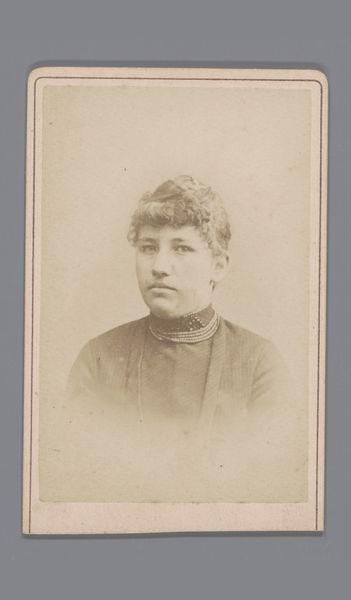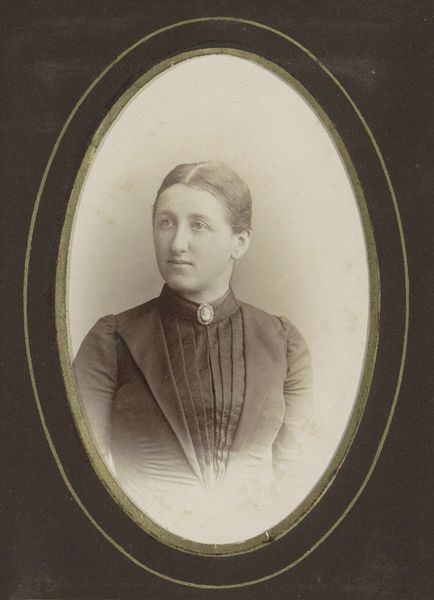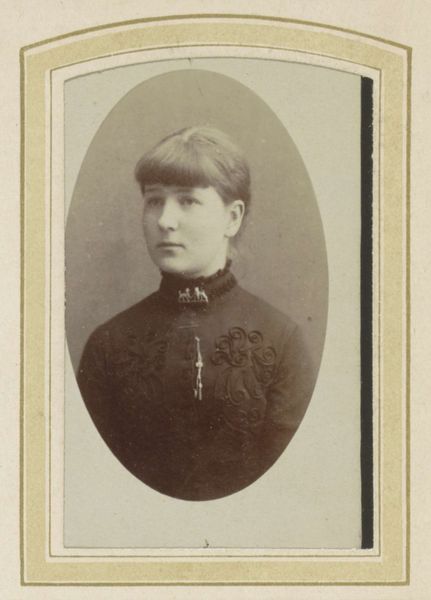
photography
#
portrait
#
16_19th-century
#
pictorialism
#
photography
#
19th century
Dimensions: height 83 mm, width 52 mm
Copyright: Rijks Museum: Open Domain
Curator: Here we have a striking photographic portrait from between 1863 and 1900, titled “Portret van een jonge vrouw,” created by Johan Christiaan Reesinck. Editor: It's immediately captivating, isn’t it? There's a certain melancholy that emanates from her gaze, framed so formally by the oval mat. She seems to embody a constrained, late-Victorian sensibility. Curator: Absolutely. The societal pressures on women during this era were immense, especially in the context of portraiture, which was a highly curated performance for the camera. We see here Pictorialism, a style popular at the time where photographers sought to align their work with the aesthetics of painting. It was an attempt to have photography be considered "high art." Editor: And Reesinck clearly succeeds. There's a soft, almost painterly quality to the light, despite its being a photograph. Her dress, although finely detailed, is muted. What could be said about her presentation? Does it mirror those societal standards of beauty and modesty? Curator: I think it is less about beauty than status, certainly a type of beauty could signify that. The formal attire, the elaborate dress, they communicate respectability and, likely, a certain level of economic privilege within Dutch society. This image exists in a tradition where the display of social standing through material culture was common. Editor: Yes, you can see it is about signalling class. There’s something subtly defiant in her gaze, though. Almost as if she acknowledges the constraints but doesn't quite surrender to them. Or is it just that, maybe, this format only gives a certain acceptable presentation, a glimpse into her life, her personality perhaps, that the audience may not be supposed to get. Curator: Or perhaps it's the very act of posing, of engaging with the photographic process, which allowed women of that era a means of navigating and negotiating those constraints within public and private life. The proliferation of photography democratized representation, yet studios could still curate the subject to align with middle-class standards. Editor: It's so compelling how a single portrait can open up entire discussions on gender, class, and the role of art in reflecting, as well as shaping, societal norms. This one has been haunting me in unexpected ways. Curator: Agreed, reflecting on Reesinck’s creation allows for deep, intersectional understandings of a photographic artwork of the time and allows it to echo to this one.
Comments
No comments
Be the first to comment and join the conversation on the ultimate creative platform.

